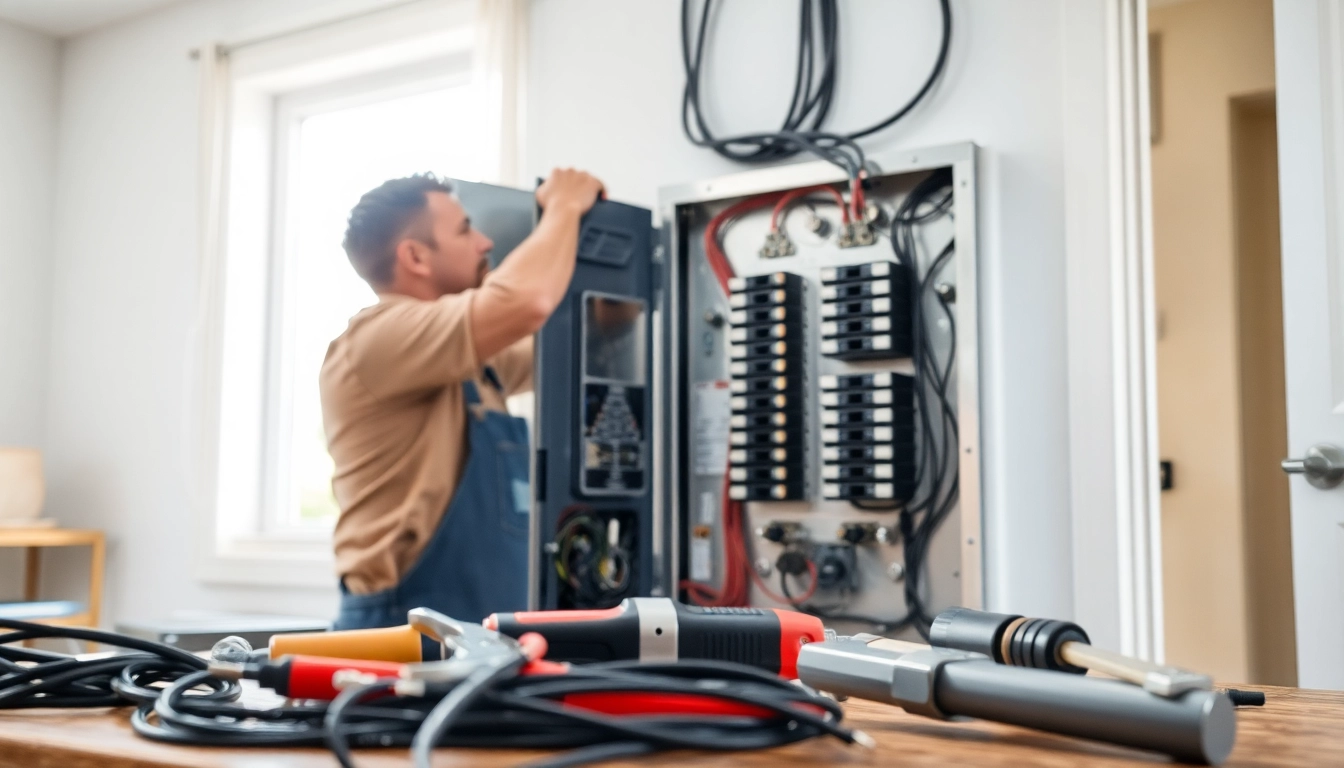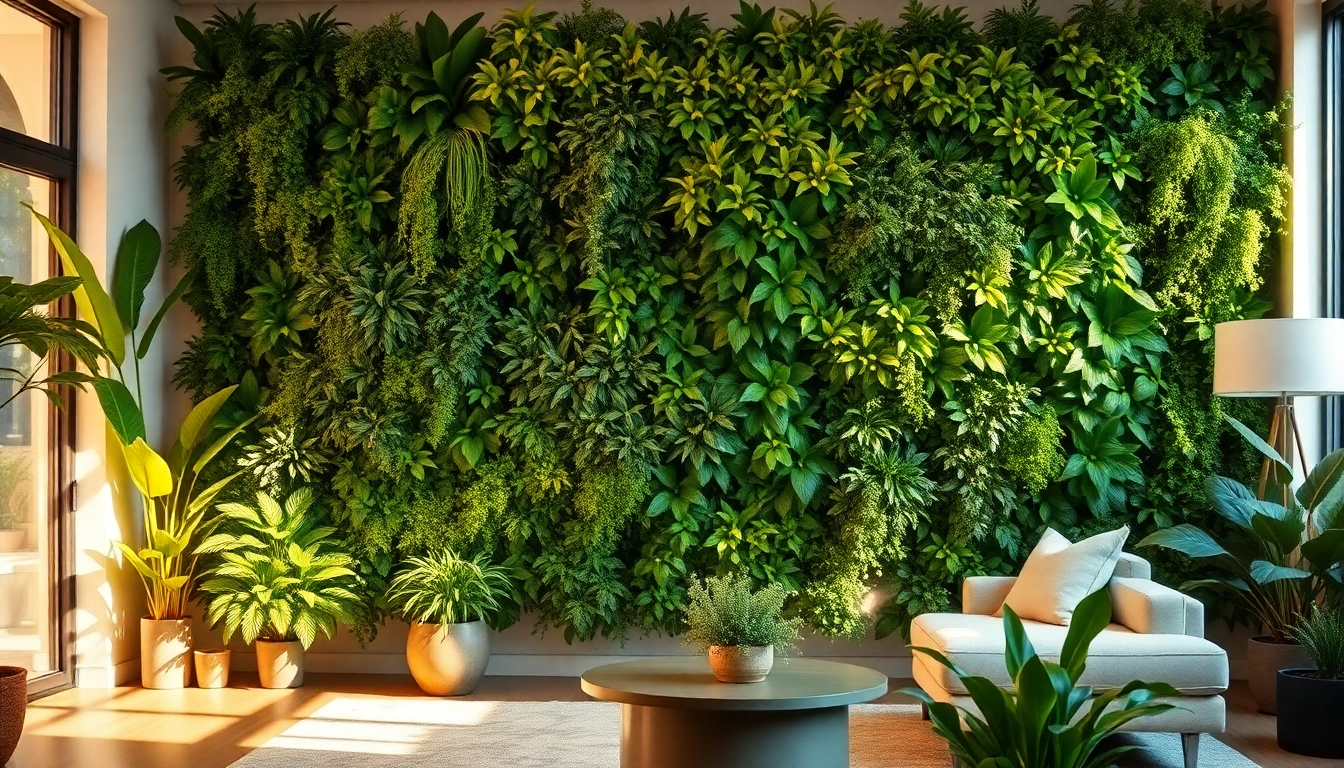Understanding Sliding Partition Walls
What is a Sliding Partition Wall?
A sliding partition wall is a versatile and functional architectural feature that allows for the division of large spaces into smaller, more manageable areas. Unlike traditional walls, sliding partition walls can be opened or closed as needed, providing the flexibility to create separate rooms or open spaces based on the current requirements. Generally constructed using lightweight frames and movable panels, these systems can integrate various materials such as wood, glass, or fabric, thereby catering to diverse aesthetic preferences and functional needs. As a result, sliding partition walls are increasingly popular in both residential and commercial applications.
Types of Sliding Partition Walls
Sliding partition walls come in various designs and configurations, each tailored to specific needs. Some of the most common types include:
- Glass Sliding Partition Walls: These modern and elegant partitions allow for natural light to flow through spaces, creating an open feel while still providing privacy when needed. Ideal for offices and conference rooms, glass sliding walls can enhance the aesthetic appeal of any environment.
- Wooden Sliding Partition Walls: Offering a warm and classic look, wooden partitions are often used in residential settings. They can be customized with various finishes, enabling homeowners to match them with existing decor.
- Fabric Sliding Partition Walls: These partitions are lightweight and flexible, often used in event spaces or theaters. They can be easily hung or stored away, making them perfect for temporary installations or configurations.
- Operable Walls: These specialized sliding partition systems are engineered for acoustic performance and space management. Common in commercial environments, such as schools and auditoriums, operable walls can provide sound isolation and flexibility in space usage.
Benefits of Using Sliding Partition Walls
The adoption of sliding partition walls comes with numerous benefits, making them a wise investment for both personal and professional spaces:
- Space Optimization: Sliding walls enable dynamic spatial configurations. They can transform a single spacious area into two distinct rooms, optimizing space based on user needs.
- Enhanced Aesthetics: Available in various finishes and materials, sliding partition walls can enhance the overall design and appeal of a space, adding a contemporary touch.
- Improved Acoustics: High-quality sliding partition walls can significantly reduce noise and enhance privacy, especially in densely populated areas like offices or multi-family housing.
- Ease of Use: With modern technology, many sliding partition walls feature simple operating mechanisms, making them easy to manipulate even for individuals without professional installation experience.
- Sustainability: Many manufacturers design sliding partitions with eco-friendly materials and practices, contributing to more sustainable building designs.
Design Considerations for Sliding Partition Walls
Choosing the Right Material
When designing sliding partition walls, selecting the right material is crucial. Various materials cater to specific needs:
- Wood options provide warmth and can be stained or painted to match any decor.
- Glass offers a sleek, modern appearance and enables light passage but may require additional elements for privacy.
- Fabric can be utilized for temporary installations, while metal frames provide durability and contemporary aesthetics.
Understanding the intended use, desired aesthetics, and budget can help guide material selection to ensure lasting satisfaction.
Understanding Color and Aesthetics
The color and finish of sliding partition walls significantly influence the ambiance of a space. Neutral colors often lend a sense of calm and professionalism, while vibrant hues can energize a room. It’s essential to consider:
- The existing color palette: Ensure that the sliding partition complements the existing decor.
- The functionality of the room: Bright colors can enhance creativity in workspaces, while calming tones may be preferable for relaxation areas.
- Texture and finish: Smooth surfaces may align with a modern, minimalistic look, whereas textured finishes can add depth and character.
Integrating Technology with Design
Today’s sliding partition walls can incorporate advanced technology for added functionality and convenience. Some innovative options include:
- Smart Glass: This technology allows users to change the transparency of glass partitions at the push of a button, providing privacy and elegance.
- Automated Systems: Motorized sliding walls can be controlled through smartphones or voice-activated devices, adding an element of luxury and functionality.
- Acoustic Control Features: Advanced designs may involve sound-dampening characteristics, contributing to comfort in high-traffic areas.
Installation Process for Sliding Partition Walls
Preparing the Space
Before installation, it’s critical to assess and prepare the space. Steps include:
- Measuring the area: Accurate measurements ensure that the sliding wall fits properly.
- Clearing the area: Remove any obstacles that may interfere with the installation process.
- Choosing a sliding mechanism: Decide whether an overhead track, wall-mounted track, or floor-mounted system will work best based on space and aesthetic preferences.
Tools and Materials Needed
Gathering the appropriate tools and materials can simplify the installation process. Common items needed include:
- Wall brackets and tracks
- Drilling tools
- Measuring tape
- Level for alignment
- Wall anchors and screws
Step-by-Step Installation Guide
- Mark the Track Location: Use a pencil to mark where the track will be mounted on the wall or ceiling.
- Install the Track: Secure the track in place using the appropriate anchors and screws.
- Attach Wall Brackets: Install brackets on the sliding panels to connect them to the track.
- Insert Panels: Slide panels onto the track and ensure they move smoothly.
- Test the Mechanism: Once installation is complete, test the sliding mechanism to ensure functionality and makes adjustments as needed.
Maintaining Your Sliding Partition Walls
Regular Maintenance Tips
Proper maintenance can prolong the life of sliding partition walls. Key practices include:
- Regular cleaning to remove dust and debris.
- Lubricating tracks and rollers to ensure smooth operation.
- Checking brackets and screws for tightness and security.
Common Issues and Solutions
Despite their durability, sliding partition walls may face some common issues. Addressing them quickly can prevent further complications:
- Difficulty in Sliding: This can often be resolved by cleaning wheels and tracks, along with regular lubrication.
- Misalignment: If the wall is not tracking properly, check and adjust the mounting hardware.
- Wear and Tear on Panels: Replace or repair damaged panels to maintain aesthetic and acoustic qualities.
How to Enhance Durability
To ensure the longevity of sliding partition walls, consider the following tips:
- Choose high-quality materials that resist wear.
- Avoid overloading panels to maintain their structural integrity.
- Periodically inspect for damage or signs of wear, especially in high-traffic areas.
Real-Life Applications of Sliding Partition Walls
Commercial Use Cases
Sliding partition walls thrive in various commercial environments, such as:
- Office Spaces: They can create flexible meeting rooms or collaborative spaces, accommodating the needs of growing companies.
- Conference Centers: Ideal for events, they allow for quick reconfiguration of space in response to changing requirements.
- Restaurants and Cafes: Sliding walls enable establishments to adjust layouts for private dining vs. open seating, enhancing operational efficiency.
Residential Transformations
In residential settings, sliding partition walls promote creative layouts. Consider the following applications:
- Home Offices: Sliding walls can help create a designated workspace that is easily concealed after work hours.
- Multipurpose Rooms: They maximize utility in smaller homes, allowing spaces to serve different functions throughout the day.
- Privacy Solutions: In open-plan homes, sliding walls provide much-needed privacy in sleeping areas without permanent structures.
Innovative Ideas for Sliding Partition Walls
As design trends evolve, innovative applications for sliding partition walls continue to emerge:
- Incorporating built-in shelving within wooden panels for functionality.
- Using decorative glass patterns for an artistic flair while maintaining transparency.
- Including biophilic design elements, such as integrated planters or living walls, introduced within the sliding mechanism.



